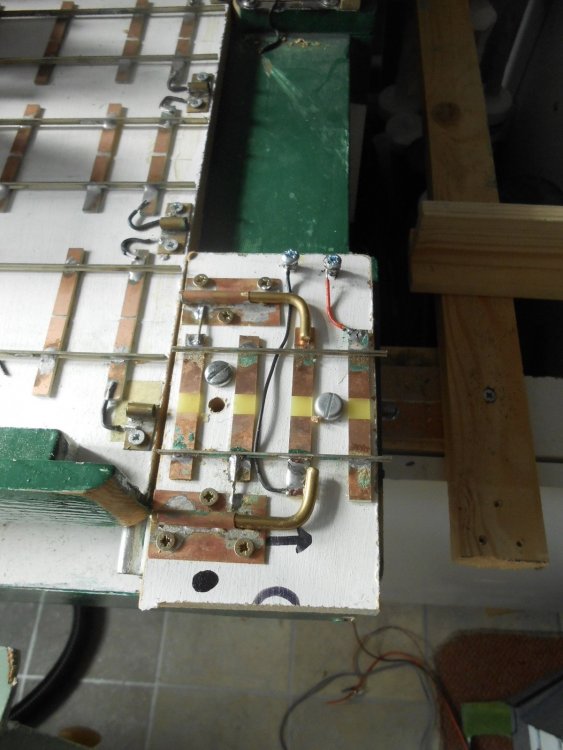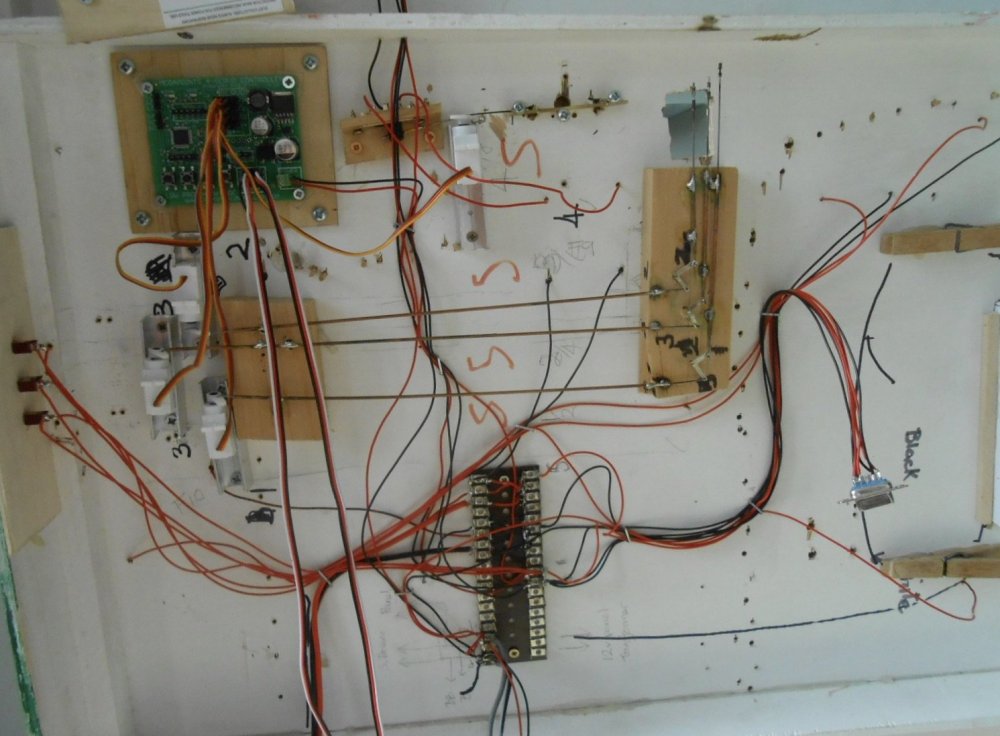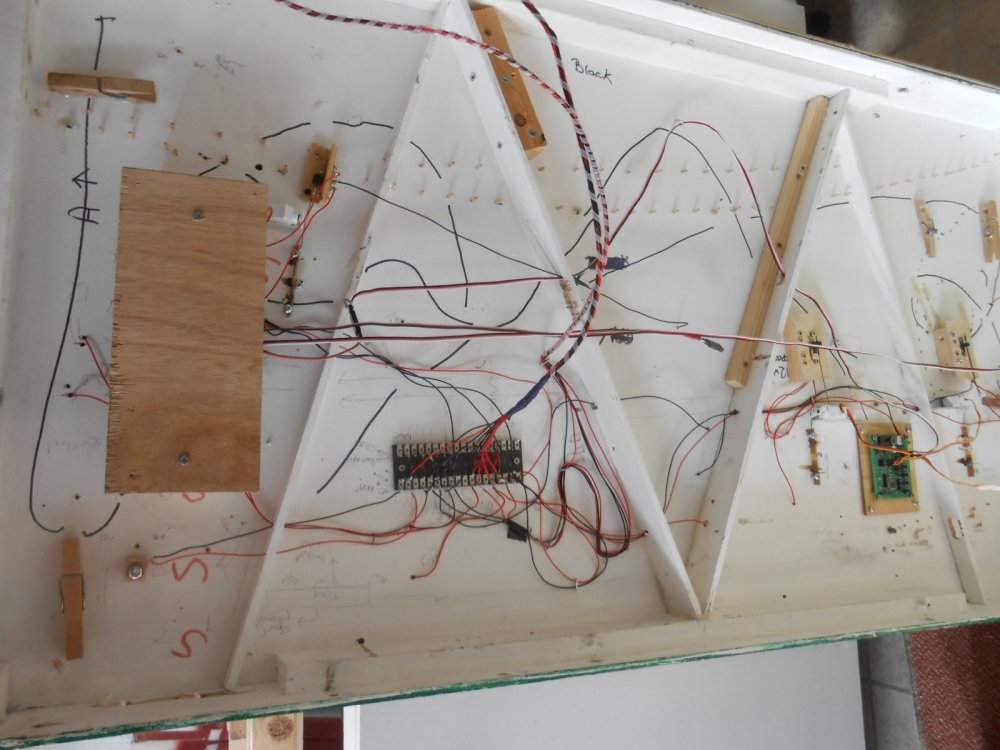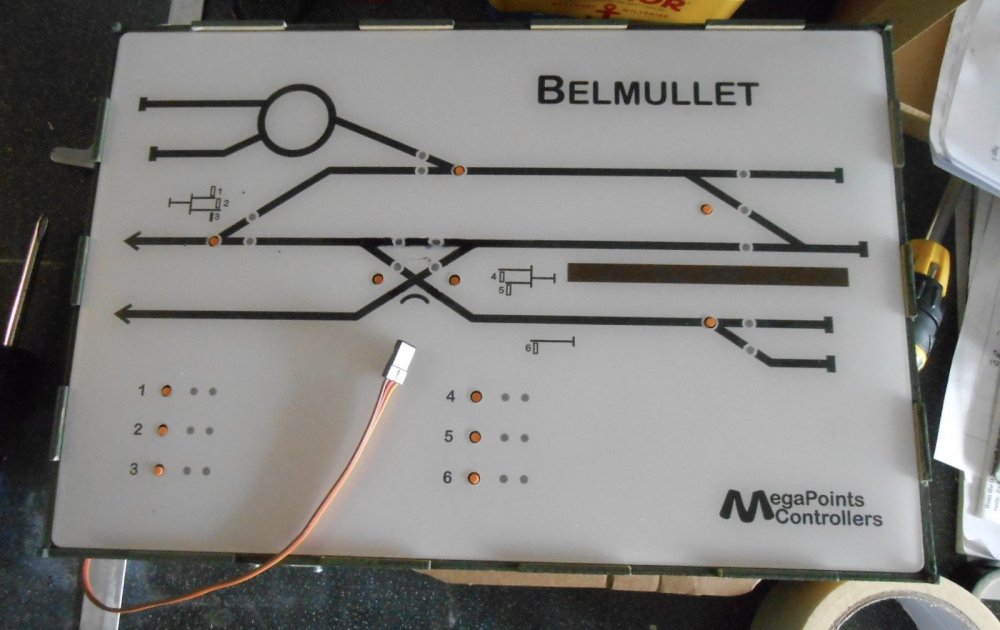
David Holman
Members-
Posts
4,325 -
Joined
-
Last visited
-
Days Won
117
Content Type
Profiles
Forums
Events
Gallery
Blogs
Store
Community Map
Everything posted by David Holman
-
Lessons for all of us here, not least that it doesn't have to take years to build a model railway - you can have something up and running in a fairly short space of time. Nothing wrong with taking longer of course, but for anyone thinking of having a go, starting small and doing something achievable is the way to go methinks
-
The Mail Goods is an interesting train. Richard Chown had at least one on the Castle Rackrent system and photos indicate it was often Shannon, with a parcels van and various wagons, including open carriage trucks and his Dublin and Meath brake vans. This is something I hope to replicate on Belmullet, especially as I have Shannon now, plus his two Dublin and Meath brake vans. Presumably the key to a Mail Goods, is that no passengers were carried, unlike the many night mail trains to Dublin from places like Sligo.
-
Splendid. Peco now do a bespoke motor unit, though the factory is currently closed so you are relying on trader stocks. Kernow Models certainly operating though.
-
Now there's a thought. A lot of things stayed the same for long periods, but people's clothes changed, as did road vehicles. The trouble with changing buildings to enable different paint jobs is finding space to store them. Easy enough in 2mm, less so in 7mm. Definitely worth thinking about though.
-
Very convincing!
-
Sligo looks made for 2mm scale - or is it the other way round? Either way, has the potential for a fantastic, long lasting project, with enough variety to last a lifetime of stock building.
-
Real atmosphere. Subtle tones, careful lighting, 'less is more' and some clever photography/editing make for very convincing scenes. The modelling is rather good too!
-
5 min epoxy for me - especially for adding things like boiler fittings as it gives you just the right amount of time to make sure they are sitting properly.
-
Glad I'm not alone in finding things like this a pain! Certainly looks the part though - especially the dark green paint job, while the bare wood boards look just right too.
-
Sharp, clean work - looking forward to seeing things develop!
- 42 replies
-
- 1
-

-
- kit building
- wagons
-
(and 5 more)
Tagged with:
-
Love it when everyday items form the basis of convincing models.
-
Considering how materials and techniques have developed in the last 20 years, the 'forgotten' DMU compares very well with modern RTR stuff. Said it before and will say it again, building coaching stock is every bit as challenging as building locomotives and here we have four DMUs and scratchbuild too. Great work!
-
Am sure we'll all look forward to following your progress.
-
Worth considering, especially as there weren't exactly a lot of coal mines in Ireland. Another thought is that Irish railways were pretty much the opposite of British ones in that the vast majority of wagons were vans/semis, rather than opens. Thus nobody knows whether they are full or empty!
-
Been doing my head in for weeks MM! However, it is essentially quite simple and used basic principles from Loose End, 20 years ago. No dcc then, so several hundred feet of wire for a layout only ten feet long! Megapoints control limits a lot of wiring, but, being analogue, track power required a couple of sections, while I always take feeds to tag strips, which then help with fault tracing. Will be the first to admit that the runs could be tidier though. As for dcc, while I do have a controller, have found I prefer the simplicity of analogue, where direction and speed is all you need to think about. Sound is fun, but chips are the thick end of £150. Did consider radio control, but again, cost is in dcc territory and as it was the Megapoints set up cost a couple of hundred.
-
Iain Rice's Gairloch has long been one of my favourites. It's in his book on Light Railway designs, which contains several other gems. Glenderg's smaller design is a little beauty too. However, would consider swapping the locoshed for a siding, to increase operational capacity. Indeed, make it a kickback into the fiddle yard and you instantly have the opportunity to suggest all sorts of off scene industry, from mineral unloading, through fish dock, dairy, warehouses, military depot etc etc
-
Iain Rice's book 'Cameo Layouts' probably contains everything you need to know. Only came out last year, so should still be widely available. Covers most scales and nothing is over 2m long, often much less. Examples include harbours, mines, industrial, rural and urban settings. The book is not just track plans though, it discusses baseboards, scenery, lighting, electrics, operation - the whole lot. Many of the idea were incorporated into my Fintonagh layout. Well worth having.
-
Major seismic disturbance in the far west of Co Mayo!
-
Great to see things made with so much precision.
-
Knitting and stuff No, Belmullet has not gone under the wires like Barrow Street, these are the wires and other stuff, under the baseboards. Must have built at least a dozen layouts over the years, but this side of things still causes me problems. Much of this is no doubt due to an element of ham fistedness - dyspraxia even - for I cannot for the life of me work out anything that is 'handed', while rotation symmetry is a guarantee for rude words. Add in the fact that baseboard wiring requires you to visual both the top and underside of the baseboard and this work has just continued to bite me.Turfing illegitimacy just two terms that spring to mind... Anyway [and cross everything here], I think I just about have it sorted. The first thing that still needed doing was fairly straightforward. The line to the harbour needs to get to the fiddle yard, however, the fact that the sector table also pulls out to turn 180 degrees means that this short section needed to be removable to enable this. A rectangle of 12mm MDF, a short length of track, two home made bolts [to align the tracks] and a couple of M4 bolts to keep the MDF in place was all that was needed. That plus a couple of round headed screws, so that the two wires from the harbour branch could connect to the removable piece with crocodile clips. The major part of the wiring involves power to the track and a Megapoints system to work the signals and points via servos. The latter is a really clever piece of kit, which enables the control panel to connect to all the points and signals via a single three wire servo lead. The brain is a complex bit of circuit board. All the switches and indicator lights on the control panel connect to this with short, plug in leads. No soldering is required and the control panel was wired up in less than half an hour. The panel and servos require a separate power source to the track - indeed with 12 volts also needed to the uncoupling magnets, that makes three power packs in all. The servo lead from the control panel goes to a 'servo controller' circuit board on Baseboard 3 [next to the fiddle yard]. This is also 'plug and play', with no soldering required and controls the first point entering the station, plus the three armed signal. From this first servo controller, a second and third are daisy chained together on Baseboard 2, controlling the other signals [yet to be built] and points. Three of the points are on Baseboard 1, so there are a couple of servo leads crossing between boards two and one. Most of this was done back in the autumn, so when I decided it was time to do some more test running, it was clearly going to be a simple matter to connect things up again. Well, no. As mentioned earlier, the points all needed miniature slide switches adding, to control polarity. Wire in tube operation worked fine on Arigna Town but, strong though these little servos are, a good yank applies much more force, so extra help was required. Of course, I managed to get a couple of sets of wires the wrong was round and what with moving the point tie bars below baseboard, the whole lot have been two weeks of blood, solder burns and tears. Add in the fact that when I did complete it, the control panel did not want to talk to the servo controllers, then you can appreciate the new and complex forms of Anglo-Saxon that resulted... Thankfully a call to the amiable, patient and ever helpful Dave Fenton at Megapoints soon put me right. He's tried to explain the logic of it all, but am afraid my eyes just glaze over! Suffice to say, it all works and the servo control boards have four small buttons on them to enable you to set the amount of travel required and add bounce to the signals too. Just hope that, now it all set up, I don't have to move the baseboards from their mountings or a while as recently they've been up and down more times than, well there's a metaphor I'm sure many of you know! The pictures hopefully show what I've been up to, with the final one showing where the control panel now sits in the workshop, above the baseboards. Pretty it ain't. When the layout is exhibited, it will need a minimum to two operators - one acting as driver/shunter, the other coveringing signalman and fiddle yard. At home, operation can be part of my daily exercise!
-
Mayner is right - mechanised working loaders/unloaders are challenging things to make and run. There are some gems out there, but keeping such things off scene is much simpler! Wagon loads can be made removable, or just have separate rakes as Mayner says. Have used this approach on numerous layouts. On the other hand, effective loaders always draw a crowd at shows, so nothing wrong with having a go.
-
Gilding the lily more like! Must be a bit of light relief after all that catenary though.
-
Try Eileen's Emporium. Presume they are still doing on line sales. Squires another good source of tools and mateeials.
-
Suspect the sides are a bit overscale in thickness, MM, but no matter, you can easily hide that with a tarpaulin. Make mine from masking tape, painted with Humbrol gunmetal, No 57. Looks like the body is card or wood, in which case strapping can be made from strips of thin card, stuck on with PVA. Likewise corner plates. As ever, check prototype photos to see where it all goes. If there are rivets, you can now get transfer sheets for these, the Grandt Line to tiny stick on ones, which are fiddly but very effective. Great to see some scratchbuilding!
-
Looks great, and particularly at home in the Rosses Point setting. What ever shade of 'black' that is, it looks very effective. Halfords 'rattle can' matt black is almost too dense and demands a degree of weathering to soften it a little, but this looks just right. Reminds me that I really must experiment with monochrome photographs too, though that station building oozes atmosphere in colour.
.png.c363cdf5c3fb7955cd92a55eb6dbbae0.png)








